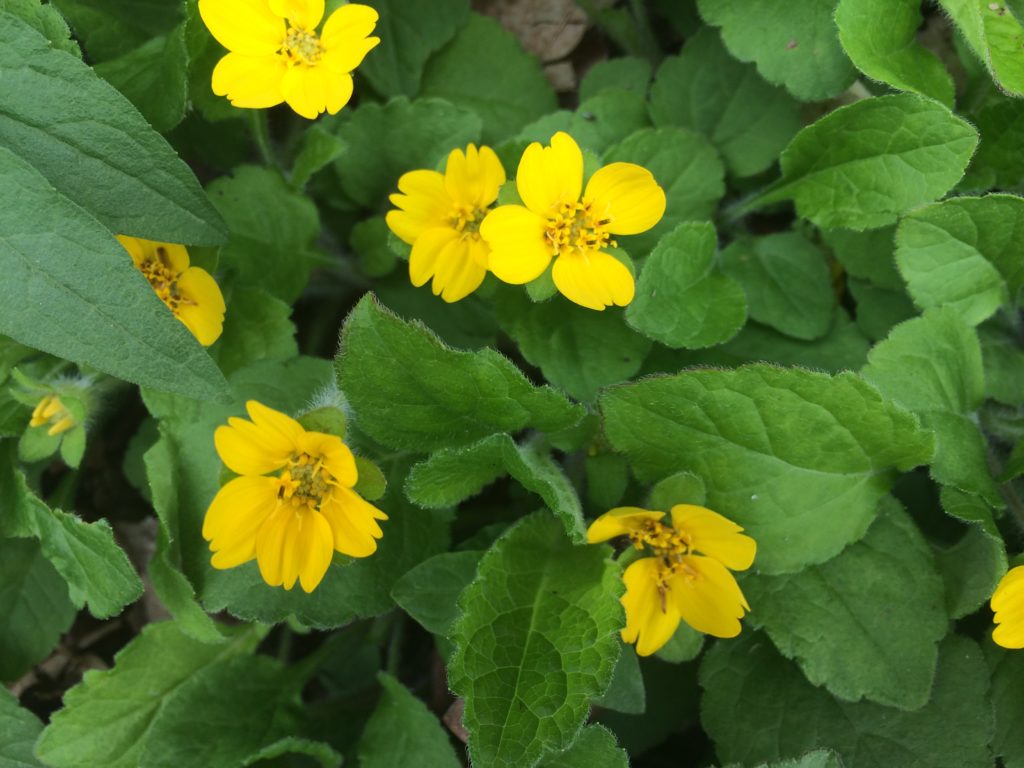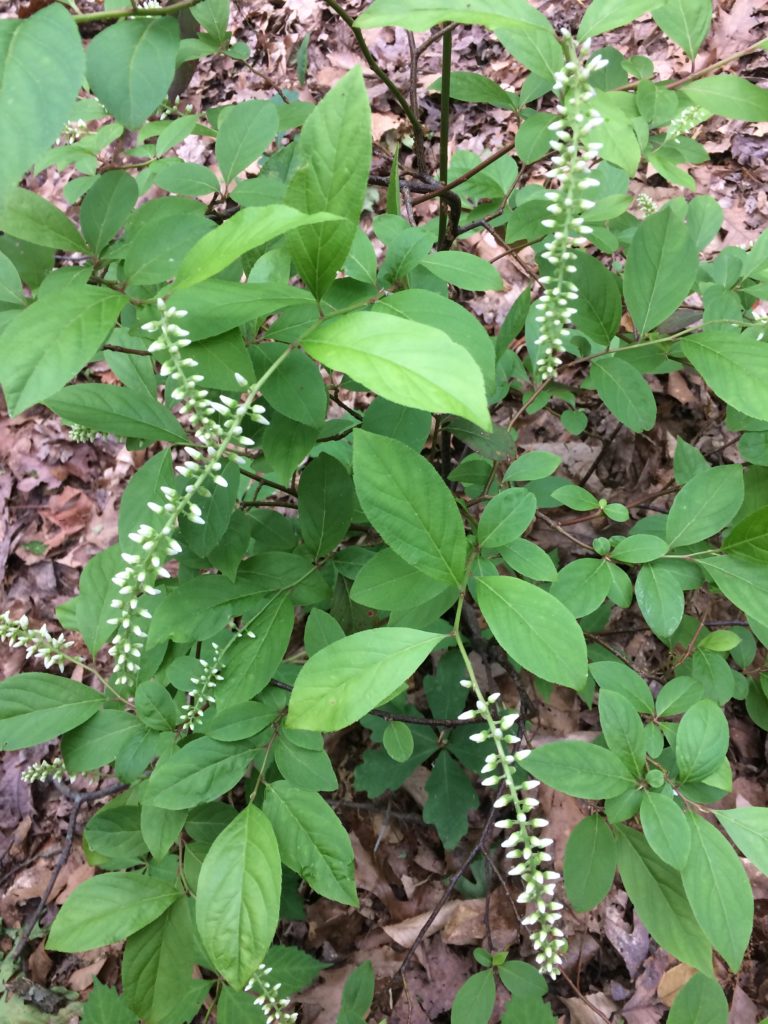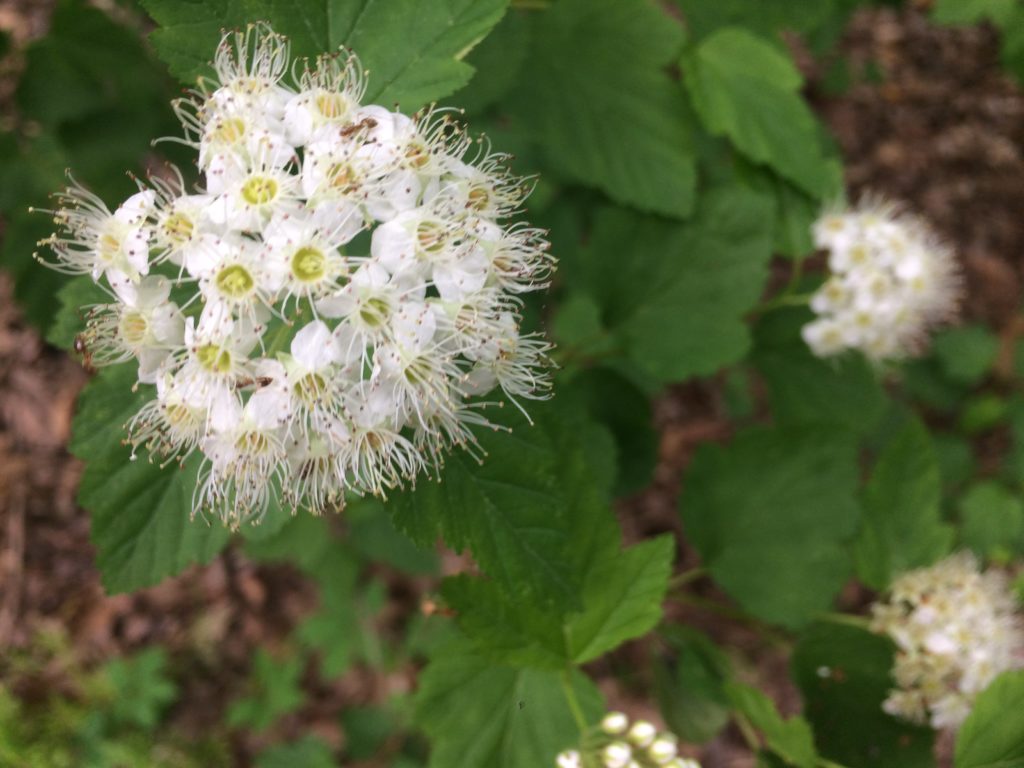
In my last article I turned my attention—and hopefully readers’ attention as well!–to the naturally occurring native plants all around us that can continue to thrive if we let them. This week let’s take a peek at just a few of the most adaptable spring and early summer-flowering shrubs and perennials native to the Richmond region to consider adding to your home.
(All photos are taken within the city of Richmond at the author’s home and at the Bayscape native plant garden at Good Shepherd Episcopal School.)

Green and Gold (Chrysogonum virginianum)
Green and Gold is a favorite of mine; it isn’t fussy and it spreads by stolons and runners making it a great ground cover in tough areas. It’s shade tolerant and has a long bloom-time.

Golden-alexanders (Zizia aurea)
Delicate and bright, Golden-alexanders prefer moist soil. Butterfly bonus: This is the host species to the Black Swallowtail.
Golden Ragwort (Packera aurea)
Remarkably adaptable to different conditions, it’s no wonder that Golden Ragwort makes its home in every county in Virginia. Attracting pollinators while repelling most herbivores, Golden Ragwort’s full-skirted foliage and abundant bright blooms make it a great choice.

Eastern Blue-star (Amsonia tabernaemontana)
Seen here just before blooming, Blue-star is truly at home in Richmond, though it occurs infrequently in its limited range.

Woodland Phlox (Phlox divaricata)
Skip the cultivars and make way for this shady woodland sign of spring that’s a favorite of native bees and butterflies.

Lyre-leaf Sage (Salvia lyrata) A wildflower that truly doesn’t care where it grows; from roadsides to woodlands, sun to shade, it tolerates both drought and temporary flooding. Lyre-leaf sage is a somewhat deer-resistant groundcover solution with much to offer pollinators including the larvae of several species.

Arrow-wood (Viburnum dentatum)
All viburnums are “wildlife powerhouses,” their flowers feed native bees and other pollinators, while their berries are forage for songbirds.

Virginia Sweetspire (Itea virginica)
Although it thrives with some full sun, Sweetspire can manage well in a mostly shady spot if it isn’t too dry. Sweetspire nectar is an insect magnet and its vibrant fall color is long-lasting.

Ninebark (Physocarpus opulifolius)
If deer-browse is a problem, this is your go-to hedge. Ninebark tolerates a range of conditions and grows rapidly in a fountain-like form.

Rosebay Rhododendron (Rhododendron catawbiense roseum)
What do all those cultivars have over this ‘straight species’? Absolutely nothing. Full disclosure: Richmond is just outside of the Rosebay’s easternmost native range, but it’s just right in a spot by this writer’s porch.
Old habits die hard– especially when non-native ornamentals dominate the aisles of garden centers and the offerings of most landscaping companies — but a little effort and a fresh outlook are all it takes to cultivate habitat at home with native plants beautiful in form and bloom, all the more so because of the life they give.
If you don’t already have a copy, Native Plants for Virginia’s Capital Region is a must that’s available for order or download on the Plant Virginia Natives website. While not intended to be an exhaustive encyclopedia of native plants of our region, this well-organized and accessible guide is an excellent planning tool.
All plants in accompanying photos sourced from Garden Gate Landscape and Design, Reedy Creek Environmental, and Hill House Native Plants. You can find a list of native plant nurseries on the Virginia Native Plant Society website.


